
Menu
As a new elementary teacher, you’re likely excited about creating a welcoming and inspiring learning environment for your students. One of the most important components of any elementary classroom is a library. A seriously awesome classroom library is a must-have. It’s like the secret ingredient that makes learning extra fun at this age! The books that stock your class library shelves won’t just make your students better readers, they’ll also spark their imaginations big time and keep them loving reading for life.
However, how do you get books for your classroom library WITHOUT breaking the bank?! In this post, I’ve gathered a roundup of ideas to help you gather books for your classroom library without spending a fortune in hopes that you can create a vibrant reading space for your students. Plus, check out my favorite read aloud books for kindergarten at the bottom with links to all!
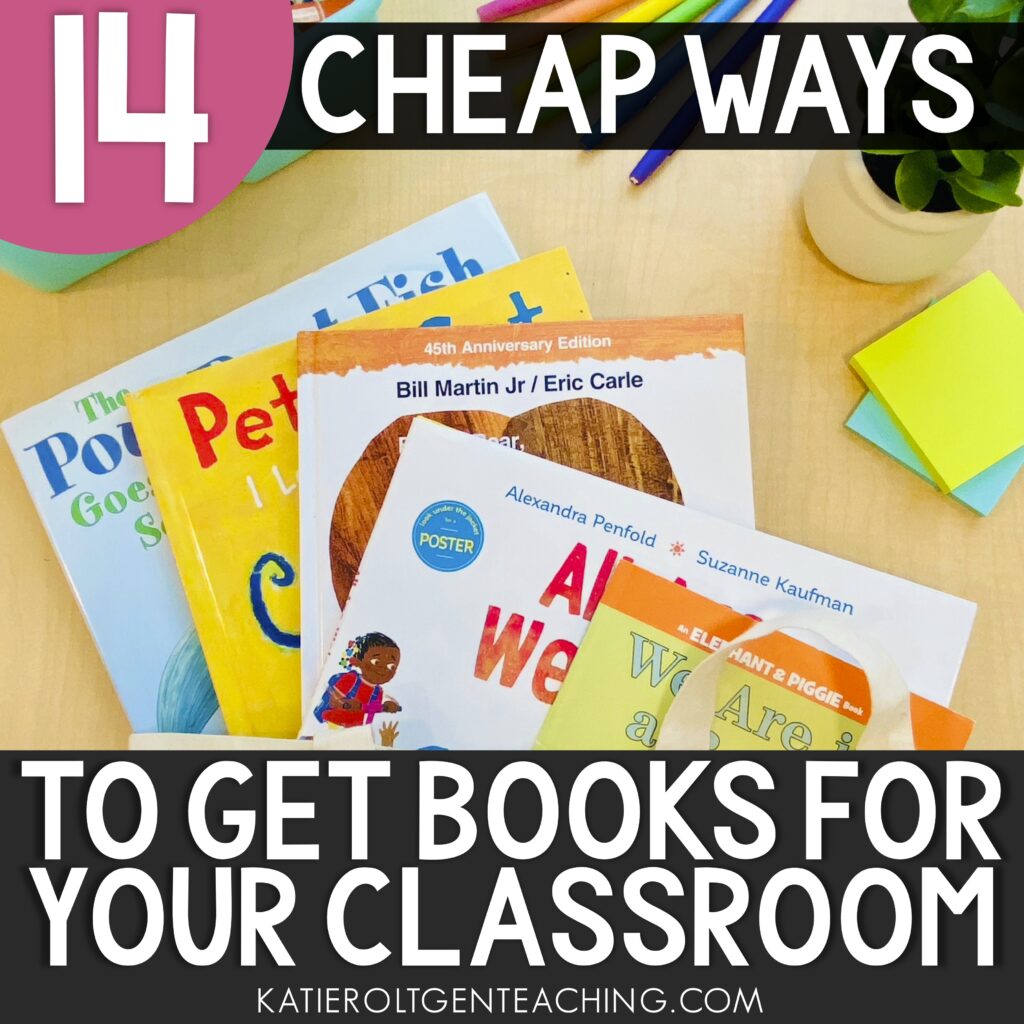
Having an amazing assortment of books for students to read in your class library is one of the most important parts of any classroom. However, we all know that as teachers, we do not have a ton of extra money to spend on extras like this. There are actually many ways that you can gather free, used or very cheap books for your class library. Let me show you 14 different ideas to fill up your classroom library as a teacher. I would love you to comment below with any other ideas that you have!
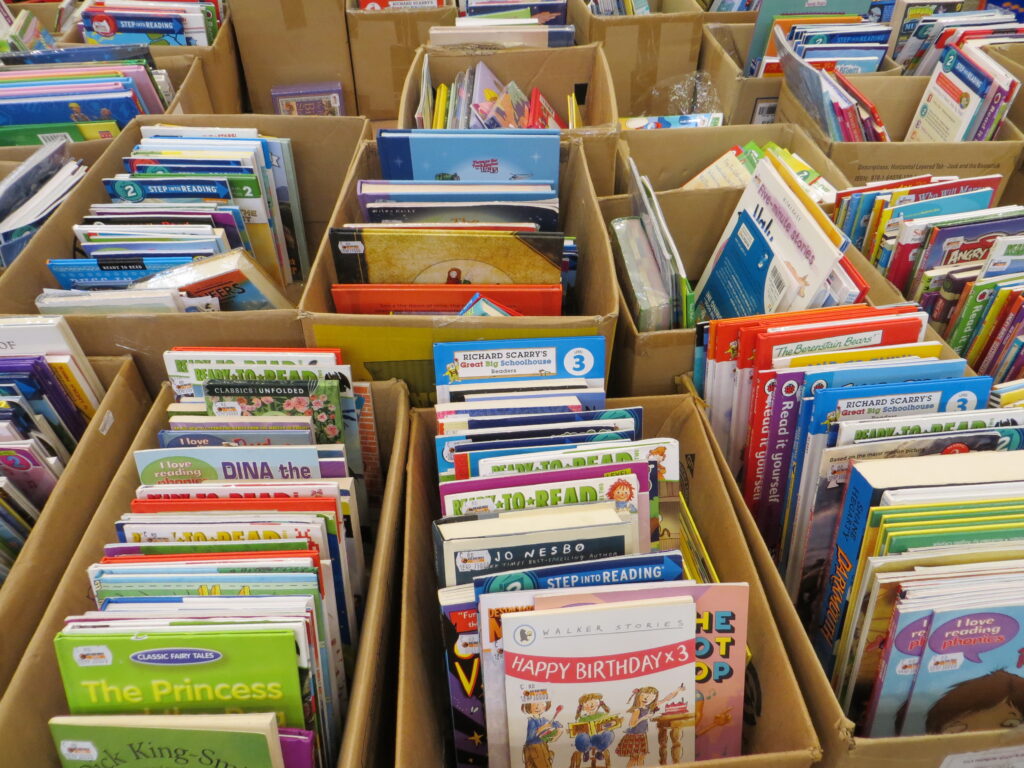
Thrift stores and garage sales are like hidden gems for getting cheap books to make your classroom library awesome! Check out local thrift shops and look for online garage sales in your area. You might find some amazing books that your students will love. These options are great for getting lots of different books that match different reading levels and interests, without spending too much money.
What Do Books Sell for at a Garage Sale?
Typically most books that I have come across at a garage sale will go for anywhere from $.50-$2.00. If you go to a garage sales during the last hour that it is open, chances are that you can probably get books even cheaper than that. If you tell them that you are a teacher, who knows-they might even just let you take some! Typically at garage sales, people just want to get rid of things taking up space in their house!
Scholastic Book Clubs offer a great opportunity to get books at very cheap prices. You can find books that work well with what you’re teaching, and you can also tell your students about it so that they can order books for themselves at home. I love this option because it helps them to see the fun in reading and choose books that really interest them. It’s like giving them the power to decide what they want to read and let their imaginations run wild.
Scholastic is a great way to get books for free because with every family order, you earn club points that can be redeemed for FREE books. When I was still in the classroom, I would typically send home a scholastic order in the fall and then another one in the spring. I liked to encourage parents to purchase some for early Christmas gifts in the fall and then get some for summer reading later in the school year. You can read more about Scholastic Book Club HERE and sign up for free!
Another fun idea to grow your classroom library is to host a classroom book drive to get students excited about growing the library together! This way, you gather books and they feel responsible too. Start by telling students about the book drive. Show how their donations help the library grow. Ask them to bring in books they enjoyed from home. Make a special spot in class for donated books.
To make it even more fun, you can have friendly contests such as having students bring in a certain genre of book on certain days. With this book drive, students learn to share and work together. The library becomes a place that they all built, showing their love for reading! This is a great way to change out your library books from year to year! It is great to do with a new class or grow your library from day one as a brand new teacher.
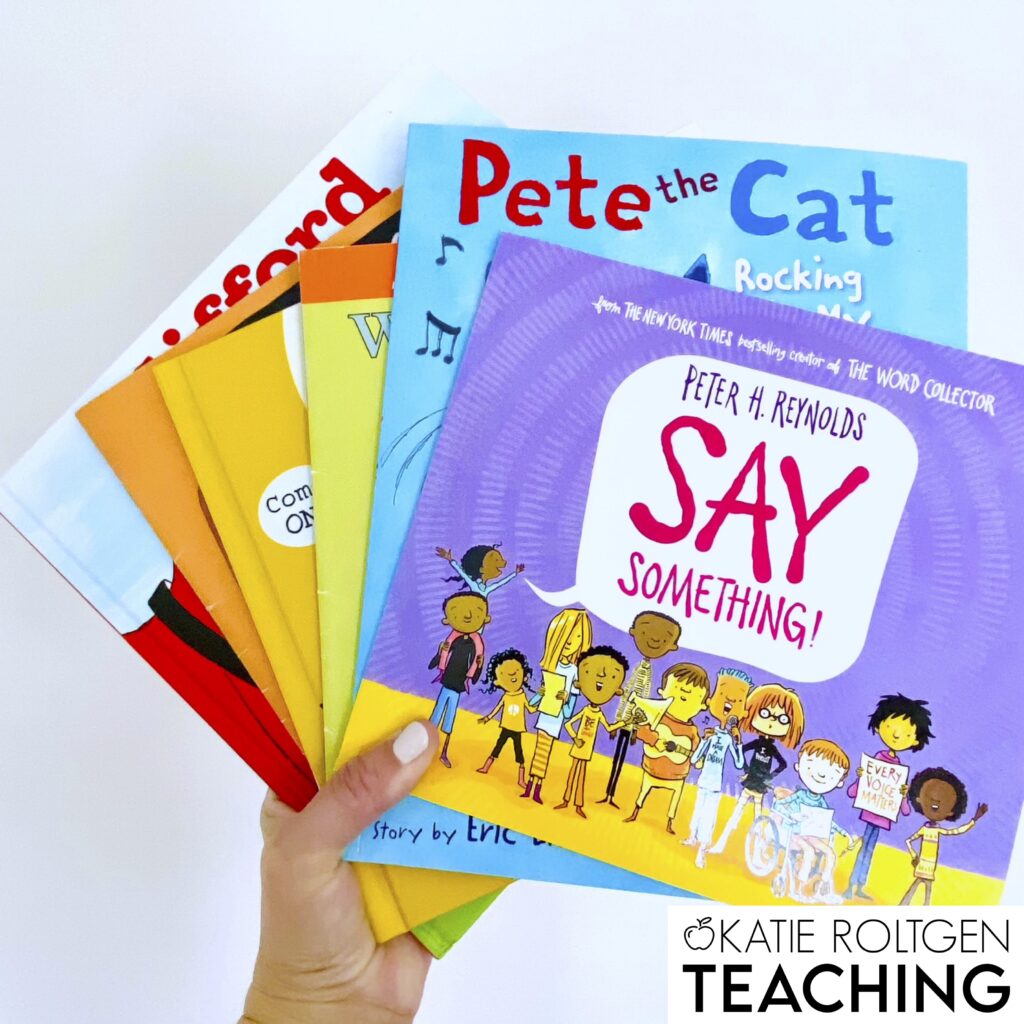
DonorsChoose is an excellent platform to use for funding for any of your classroom needs, including building your classroom library. By creating a proposal that lets your family and friends know your needs and goals of your class library, you can rally support from them. Sometimes strangers are even willing to donate if they enjoy helping to fund educational areas. You write up your idea, explaining why a great library matters, and then share the link with anyone who might want to support. It’s really simple and effective! Teachers have been using this for years!
Many local libraries periodically hold book sales to make room for new additions to their collection. Keep an eye out for these sales, as they often offer books at significantly reduced prices. Not only can you find books for your classroom library, but you can also connect with local library staff who might have recommendations that meet your students’ interests and reading levels. Sometimes libraries are actually just happy to donate books to teachers who need them. It is definitely worth asking!
Online marketplaces like Amazon, eBay, and ThriftBooks offer a convenient way to explore a wide selection of new and used books. Try to look for sellers who offer bulk deals. This can help you stretch your budget further while adding a variety of titles to your collection. Additionally, these platforms often allow you to filter results by genre, age group, and condition, which makes it easier to find the perfect picture books or chapter books for your classroom! I have also seen a lot of books for sale lately on my Facebook Marketplace if that is an online marketplace that you use as well.
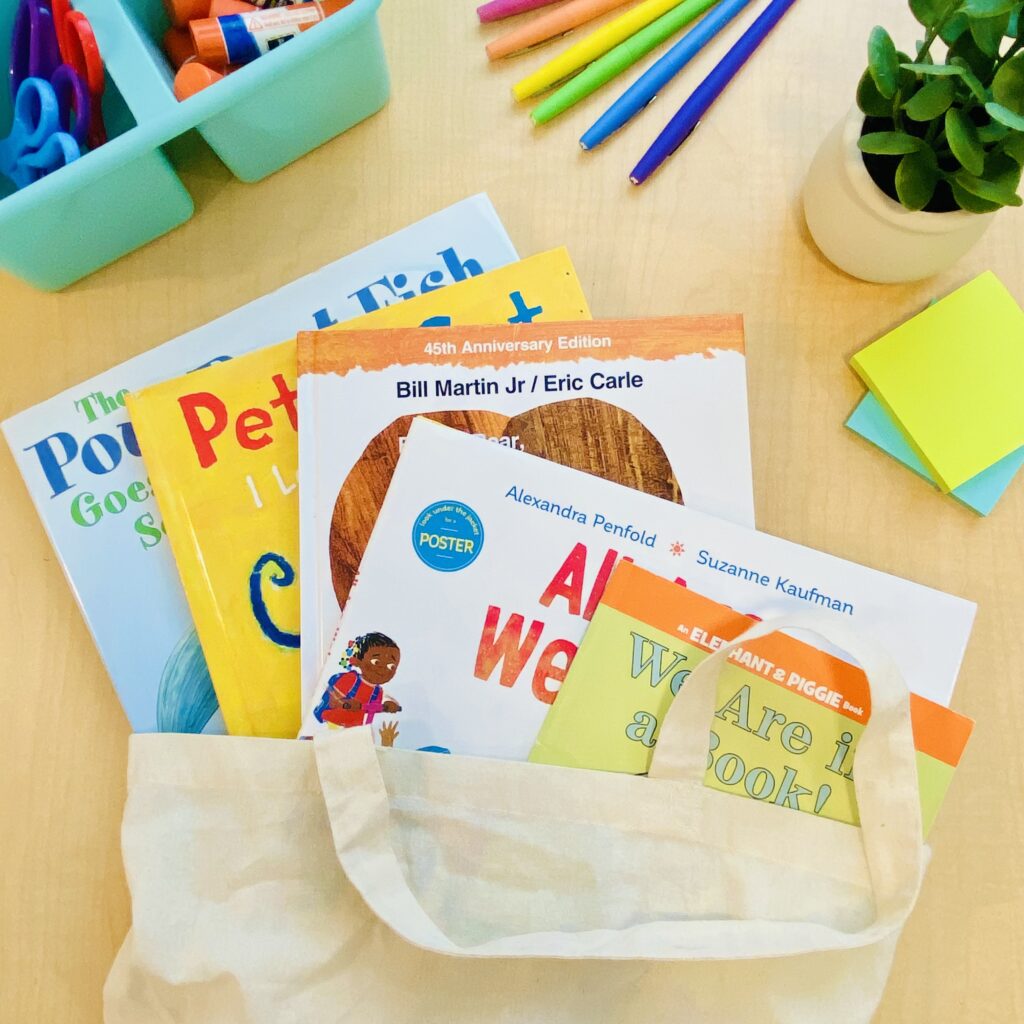
Book fairs hosted by your school provide yet another opportunity to gather book donations for your classroom. Typically the school librarian is in charge of this but that is not always the case. Whenever my school held a book fair, teachers had the chance to create a “wish list” to leave for parents during the book fair week. Many times, I would get a few wonderful parents who would donate the books on my list. This was always a nice surprise!
Speaking of parents, they are honestly the most valuable partners in your students’ education journey. Communicate with parents about your classroom library needs and the type of books you are looking to include. Parents often have books at home that their children have outgrown, and they might be excited to contribute to your classroom library’s growth, especially if it will benefit their child. Working together collaboratively like a team with parents was always my goal when in the classroom. Parents and even grandparents really enjoy giving back to their child’s education when they can! This honestly goes for any classroom needs, not just books. I always felt that my parents were supportive and willing to help make our classroom better!
Supporting local businesses is not only beneficial for the community but also for your classroom library. Local bookstores might offer discounts to educators or be open to bulk purchases. Building a rapport with bookstore owners can lead to ongoing partnerships, allowing you to access new releases and recommendations that align with your curriculum. In addition, if they receive multiple copies of titles or want to change out their inventory, they are happy to help out classroom teachers a lot of the time.
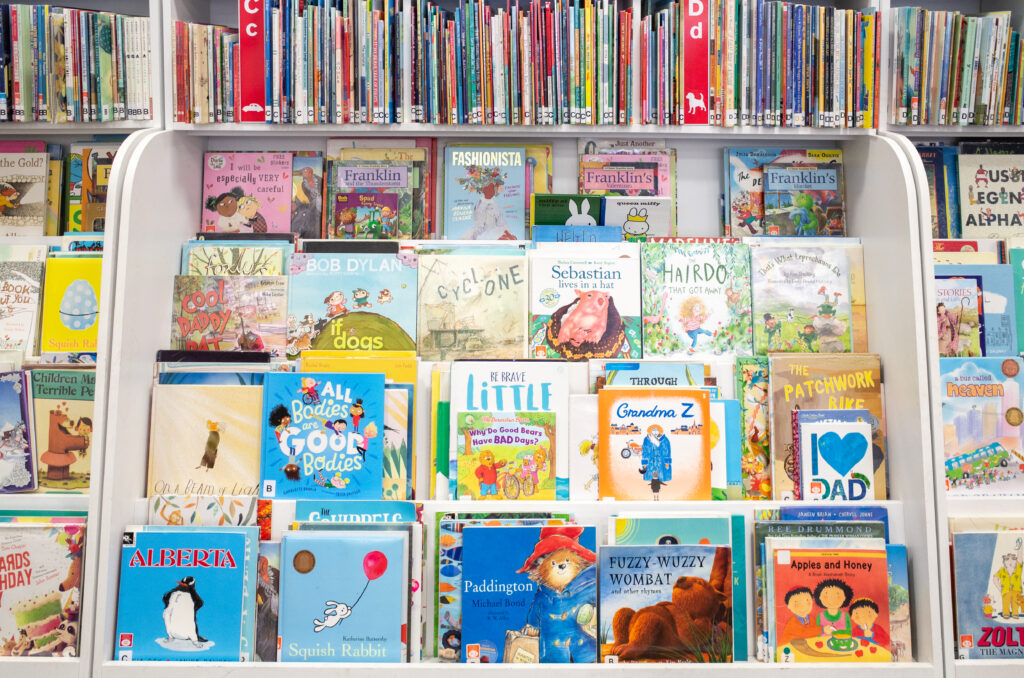
Researching local and national grants dedicated to supporting educators and literacy initiatives can be another valuable resource for your classroom library. Many organizations and foundations offer tons of money specifically aimed at improving access to quality reading materials for students. All you have to do is come up with a compelling grant proposal that can help you secure funding to purchase books that align with your teaching goals. If other teachers in your school have written grants before, you may want to chat with them to get ideas of what worked and what didn’t.
Check out these grant opportunities listed by Learning A-Z or this Big List of K-12 Education Grants for Teachers from We Are Teachers.
Create a classroom wishlist of books that you’d like to have in your library. Share this wishlist with parents, fellow teachers and even your school community. This makes it easy for supporters to contribute directly to your library’s growth by gifting books that align with your students’ interests and learning needs. I have found that parents actually enjoy knowing what teachers want and how they can best support them and buy special gifts for their classroom. One great idea I have seen is to have a QR code to your Amazon wishlist posted outside of your door during conference time or on your school newsletters. This way, parents always know what is needed.
Collaborating with your school’s Parent-Teacher Association (PTA) or local community organizations to host book donation drives can be another meaningful way to gather books. People often have gently used books that they’re willing to donate to support education. By organizing a donation drive, you not only acquire books for your library but also promote the importance of reading within your community!
Book subscription services are a great way to get fresh books for your classroom regularly. Subscribing to these services lets your students explore different kinds of books, making your library exciting. They usually have books that match the age of your students, which is awesome because it saves you time from hunting down all the books yourself.
And speaking of book subscription services, here are four fantastic ones to consider:
These services can really amp up your classroom library game and keep things fresh and exciting!
I think almost everyone I know has Facebook, Instagram or Tiktok these days. Don’t be afraid to write a Facebook post asking if anyone has any kids books that they want to get rid of to donate to your classroom. You might be surprised by how many “Facebook friends” actually want to help! If you do set-up a DonorsChoose account, social media is another great place to post your link to family and friends.
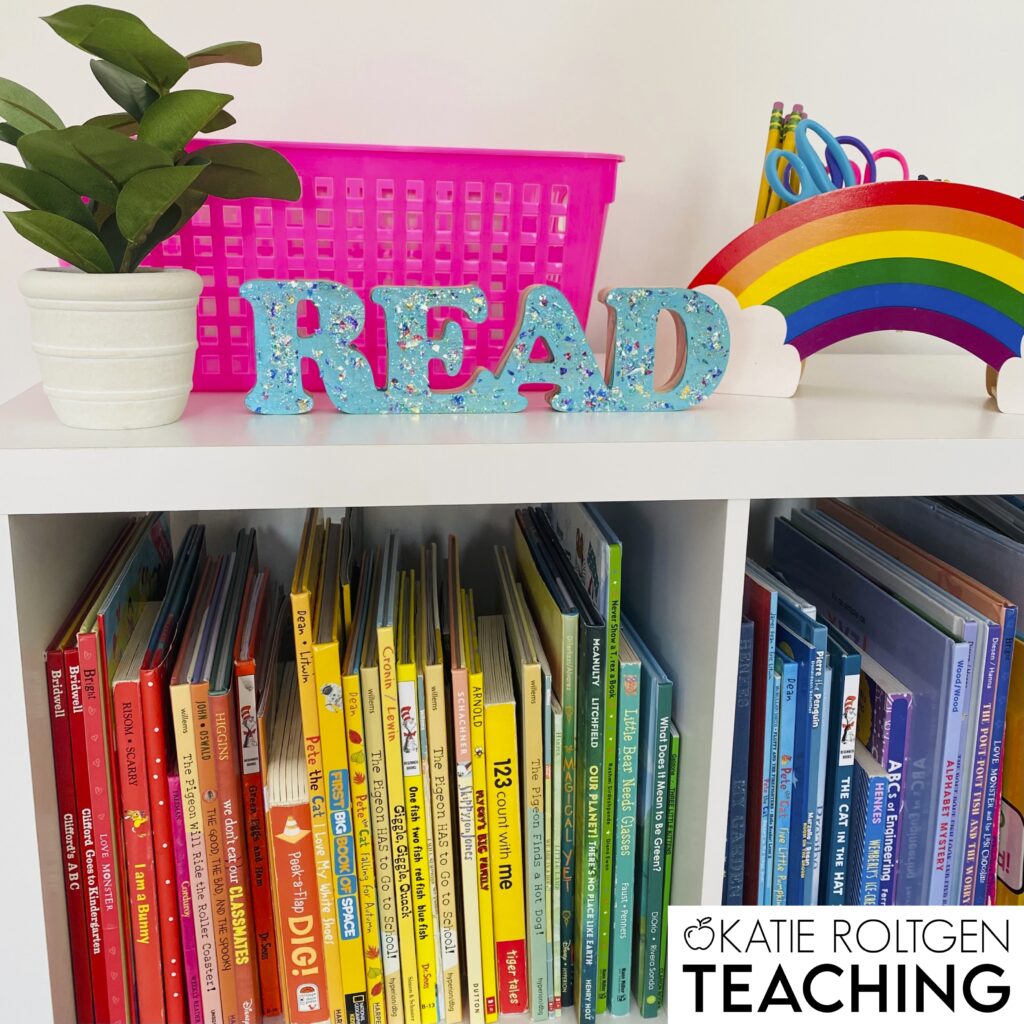
Creating an engaging classroom library can be really fun! It helps students to develop a deeper love for reading and use their imaginations. Remember, the library isn’t only for books; it’s like a door to exciting things. Your excitement and hard work can make students love reading and learning forever.
Here are some of my favorite read alouds for different seasons for my kindergarten friends:
First Day of Kindergarten Read Alouds
The Best Pumpkin Read Alouds for Kindergarten
Leaf Read Alouds for Kindergarten
14 Valentine’s Day Read Alouds
Earth Day Read Alouds for Kindergarten
100th Day Read Alouds for Kindergarten
Happy reading and book hunting!